Dimorphoma L.W. Hou, L. Cai & Crous, in Hou, Groenewald, Pfenning, Yarden, Crous & Cai, Stud. Mycol. 96: 388 (2020)
Index Fungorum number: IF 833547; MycoBank number: MB 833547; Facesoffungi number: FoF 11504
Etymology: The genus name refers to the dimorphic conidia of the type species.
Asexual morph Conidiomata pycnidial, solitary, (sub-)globose, glabrous or covered with hyphal outgrowths. Ostioles single, papillate. Pyc- nidial wall pseudoparenchymatous, multi-layered. Con- idiogenous cells phialidic, hyaline, simple, smooth, variable in appearance, flask-shaped, oblong or isodiametric. Conidia two types, both originating from the same pycnidium. Conidia of type 1: (sub-)globose, smooth- and thin-walled, hyaline, aseptate, guttulate. Conidia of type 2: cylindrical to ellipsoidal, thin-walled, smooth, hyaline, aseptate, mainly eguttulate. Chlamydospores ubiquitously present in the agar, unicellular, globose, in long chains, greenish pigmented. Sexual morph unknown.
Type species – Dimorphoma saxea (Aveskamp et al.) L.W. Hou,L. Cai & Crous
Notes – Although phoma-like species are known from various substrates, the number of rock-inhabiting isolates is relatively low. The type species of Dimorphoma was described from stone and characterised by producing pycnidia with an extremely thin pycnidial wall, being almost hyaline when the conidia have exuded (Aveskamp et al. 2010). Besides, conidia of the type species are of two types (globose conidia and cylindrical to ellipsoidal conidia), both originating from the same pycnidia. Phylogenetically, this species is also clearly separate from all known genera of Didymellaceae (Fig. 1), and therefore a new genus is introduced as Dimorphoma.
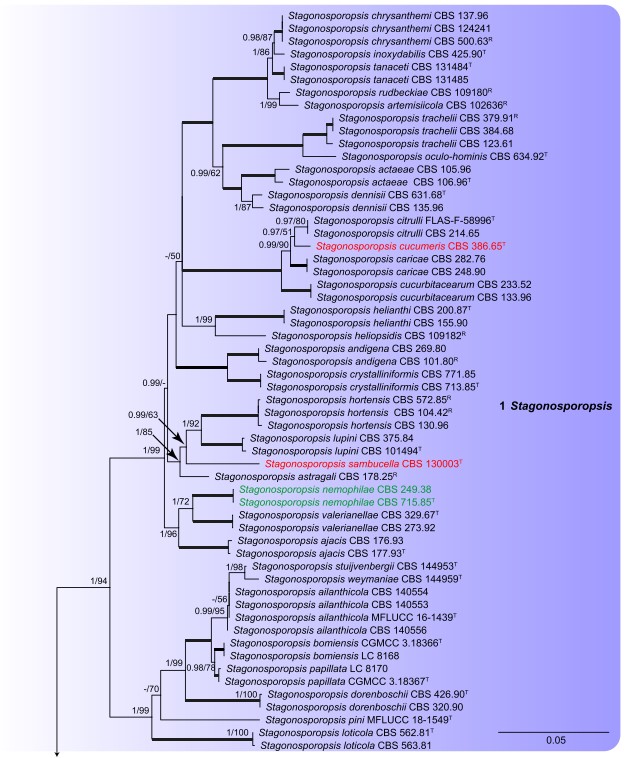
Fig. 1. Phylogenetic tree inferred from a Maximum Likelihood analysis based on a concatenated alignment of LSU, ITS, rpb2 and tub2 sequences of 597 strains representing Didymellaceae and outgroup sequences. The RAxML bootstrap support values (MLBS) above 50 % and Bayesian posterior probabilities (BPP) above 0.80 are given at the nodes (BPP/MLBS). Some of the basal branches were shortened to facilitate layout (the fraction in round parentheses refers to the presented length compared to the actual length of the branch). The scale bar represents the expected number of changes per site. Genera are delimited in coloured boxes, with the genus name indicated to the right. Strains with special status are indicated with a superscript letter after the accession number (R: representative; T: ex-type). The new species are printed in red font and new combinations in green font. The tree is rooted to Coniothyrium palmarum culture CBS 400.71, Neocucurbitaria aquatica culture CBS 297.74 and Pleiochaeta setosa cultures CBS 496.63 and CBS 118.25.
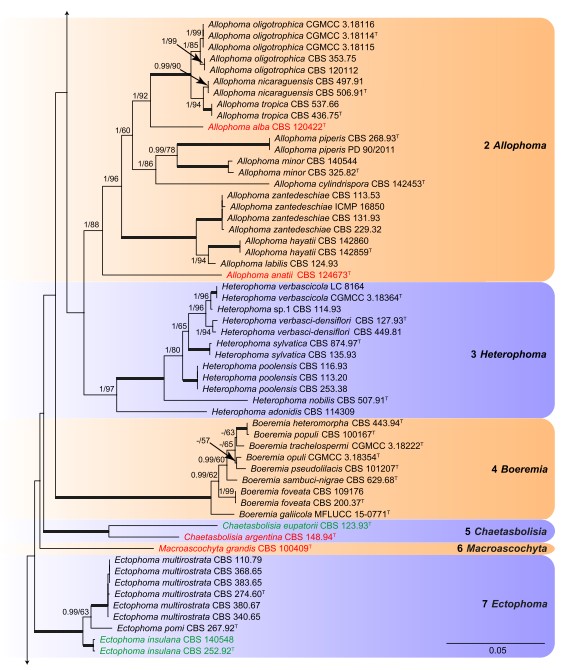
Fig. 1. (Continued).
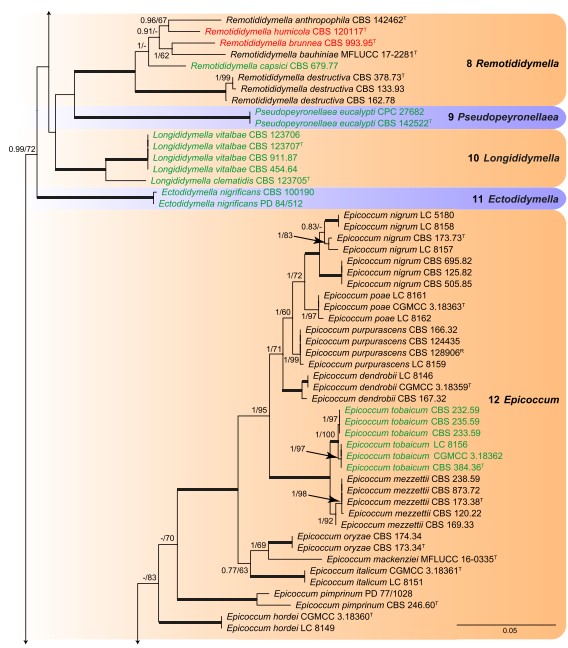
Fig. 1. (Continued).
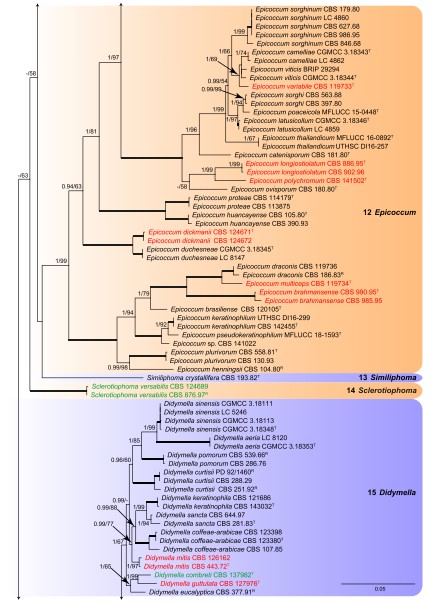
Fig. 1. (Continued).
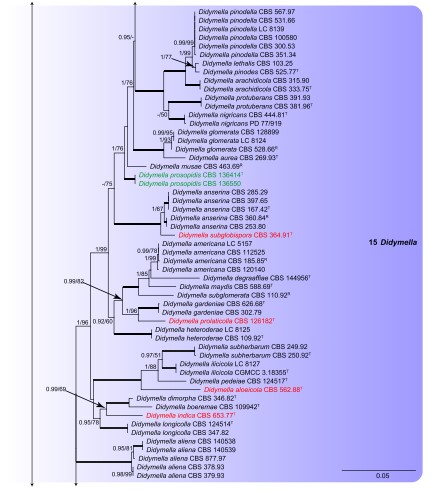
Fig. 1. (Continued).
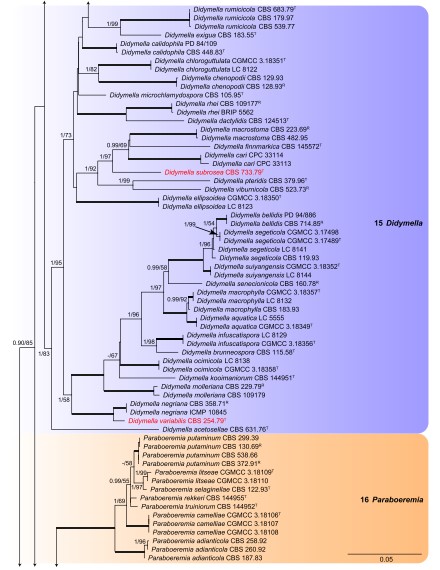
Fig. 1. (Continued).
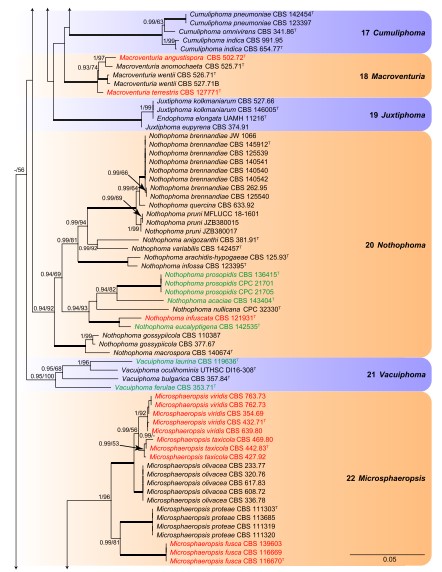
Fig. 1. (Continued).
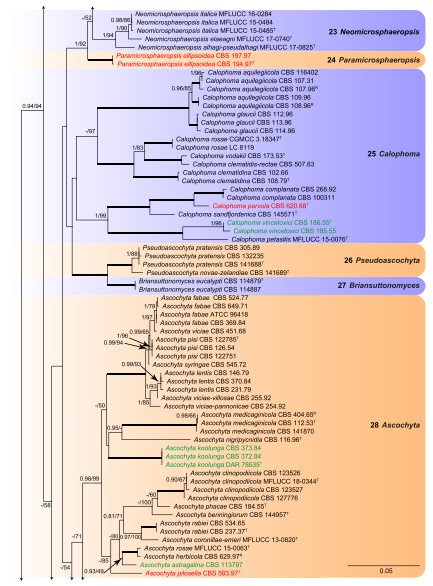
Fig. 1. (Continued).
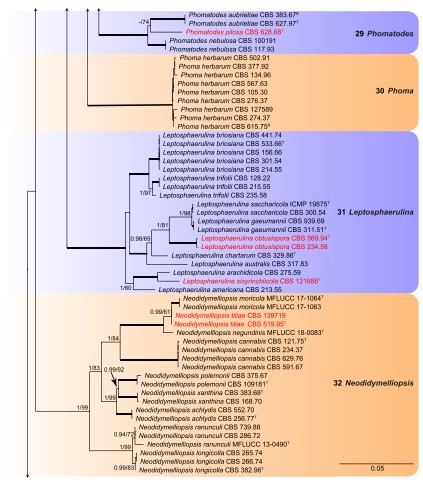
Fig. 1. (Continued).
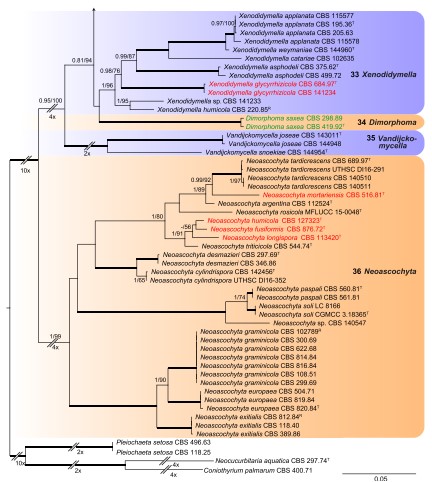
Fig. 1. (Continued).
Species
